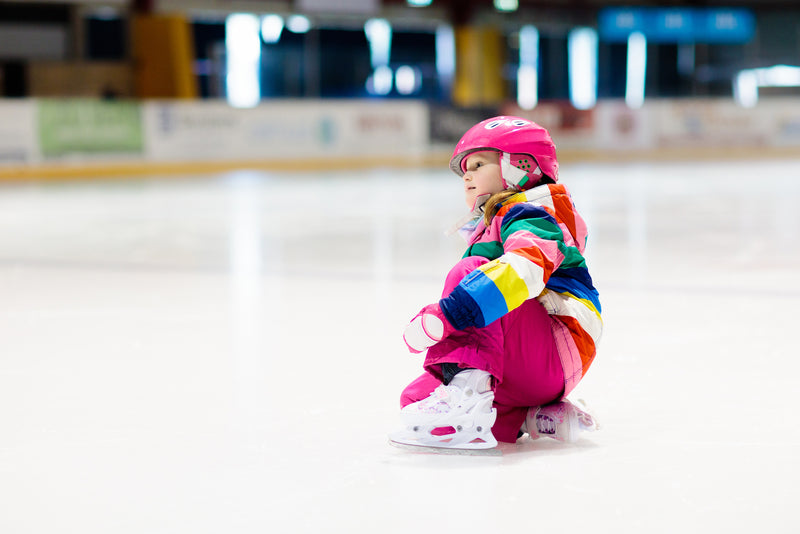When your child is taking their first steps onto the ice, one of the most important things to consider is their safety. Ice skating is a fun and exciting activity, but like any sport, it comes with its risks, especially for young skaters who are still developing their skills and balance. To ensure that your child has a positive and safe experience, investing in the right protective ice skating gear is essential. In this guide, we’ll walk you through the key protective gear that every young skater needs and offer tips on how to choose the best options for your child’s needs.
Why Protective Gear is Important for Kids in Ice Skating
For kids learning to skate, falls are inevitable. Whether they’re new to the rink or becoming more adventurous, it’s crucial to ensure they have the necessary protection. Protective gear helps absorb impacts and prevents serious injuries, ensuring that your child can enjoy skating while staying safe.
Key Benefits of Protective Ice Skating Gear:
- Prevents Injuries: Gear like helmets, wrist guards, and knee pads help protect your child from common ice skating injuries like bruises, sprains, and head injuries.
- Boosts Confidence: Knowing they’re protected gives kids the confidence to practice and improve their skills without fear of injury.
- Encourages Fun: With the right protection, kids are more likely to have a fun and stress-free experience on the ice, which helps them enjoy the sport and want to keep skating.
1. Choosing the Right Ice Skating Helmet
A helmet is the most important piece of protective gear for young skaters. Even though the risk of serious head injury in recreational ice skating is relatively low, kids are more prone to falls, and their developing bodies are more vulnerable to impacts. A well-fitting helmet can protect them from bumps, falls, and other accidents.
How to Choose a Helmet for Kids:
- Size: Measure your child’s head to find the right helmet size. A helmet should fit snugly without being too tight and should sit level on the head.
- Safety Certification: Always check for safety certifications such as ASTM F1447 or CE EN 1078 to ensure that the helmet meets safety standards.
- Ventilation: A helmet with ventilation holes will keep your child cool and comfortable during longer skating sessions.
- Adjustable Fit: Look for a helmet that has adjustable straps and padding to ensure it stays securely in place as your child grows.
Tip: Make sure your child’s helmet is comfortable enough to wear for long periods. A helmet that fits well will stay on properly and offer the best protection.

2. Wrist Guards to Prevent Falls
Wrist injuries are common in ice skating, especially when kids fall and use their hands to break their fall. Wrist guards provide essential support and help prevent sprains, fractures, and bruises.
How to Choose Wrist Guards:
- Size: Wrist guards come in different sizes, so make sure to choose the one that fits your child’s hands and wrists comfortably. The guard should be snug but not too tight.
- Material: Look for wrist guards made of durable, shock-absorbing materials, such as high-quality plastic or reinforced fabric.
- Easy to Use: Choose wrist guards with adjustable straps for a secure fit. The straps should be easy to fasten and adjust as needed.
Tip: Wrist guards should be worn by kids of all skill levels. They help prevent injuries during falls, which are more likely when your child is learning or trying new skills.
3. Knee Pads for Impact Protection
Knee pads provide essential protection for kids as they learn to skate and fall frequently. Protecting their knees helps prevent bruises, abrasions, and painful injuries that can make them hesitant to skate again.
How to Choose Knee Pads:
- Padding: Look for knee pads with thick padding to absorb impact. This will provide better protection against falls.
- Fit: Knee pads should fit snugly around the knee joint without restricting movement. Adjustable straps are a great way to ensure a secure fit.
- Comfort: Make sure the knee pads are comfortable enough for your child to wear for extended periods. They should be flexible and breathable to allow for movement.
Tip: Knee pads should cover the knee area fully, providing extra protection when your child falls on their knees. Some designs are specifically made for skating, ensuring they stay in place while your child moves.

4. Elbow Pads for Extra Protection
Elbow pads are equally important as knee pads, especially for kids who are just starting to learn how to skate and are likely to fall often. They protect the elbow joint from scrapes, bruises, and fractures, which can occur when kids land on their arms.
How to Choose Elbow Pads:
- Padding and Protection: Elbow pads should have thick, high-quality padding on both the front and back to absorb impact from falls.
- Fit: Elbow pads should fit snugly around the elbow without restricting movement. They should stay in place during skating, even during fast movements or tumbles.
- Breathability: Look for elbow pads made from breathable materials to keep your child comfortable throughout their session.
Tip: Elbow pads that are too loose or too tight can cause discomfort. Always check the fit and adjust the straps to ensure your child’s elbows are fully protected.
5. Ice Skating Gloves for Hand Protection
While wrist guards provide protection for the wrists, gloves serve a different purpose: they keep your child’s hands warm and provide an additional layer of protection against minor scrapes and falls.
How to Choose Ice Skating Gloves:
- Warmth and Comfort: Make sure the gloves are warm enough to keep your child’s hands comfortable on the ice. Materials like fleece or soft cotton provide good insulation.
- Grip: Look for gloves with a textured palm that provide a good grip, helping your child hold onto the rink’s edge if they lose their balance.
- Fit: Gloves should fit snugly but allow for full movement of the fingers, so your child can still perform basic skating motions.
Tip: Choose gloves that are easy for your child to put on and take off independently. This encourages them to wear the gear every time they skate.
6. Protective Clothing and Layers
In addition to the essential pads and guards, the right clothing can make a big difference in both safety and comfort on the ice. Layered clothing helps keep your child warm, while allowing them to move freely.
What to Look for in Protective Clothing:
- Base Layers: Opt for moisture-wicking base layers to keep your child dry and warm on the ice. Look for fabrics that allow for movement, like stretchy materials.
- Pants and Jackets: Padded or insulated pants and jackets provide extra comfort and warmth. Soft-shell jackets and pants made from flexible materials are ideal for skating.
- Avoid Bulky Clothing: Bulky clothing can restrict movement, so make sure your child’s outfit is lightweight but still provides enough warmth and protection.
Tip: Avoid clothing with long, loose sleeves or pants that could get caught on the skates or rink surface. Fitted clothing is better for both safety and comfort.
7. How to Encourage Your Child to Wear Protective Gear
While protective gear is crucial for safety, getting your child to wear it every time they skate can sometimes be a challenge. Here are a few tips to encourage your child to wear their gear:
- Make It Fun: Let your child choose gear in their favorite colors or with fun designs to make it more exciting to wear.
- Lead by Example: If you skate with your child, wear your own protective gear to show them how important it is.
- Emphasize Safety: Teach your child about the importance of safety and how the gear helps keep them protected from injury.
- Create a Routine: Make wearing protective gear a habit by having your child put it on as part of their pre-skating routine.
Conclusion
Choosing the right protective gear for your child is essential to ensuring their safety and boosting their confidence on the ice. From helmets and wrist guards to knee pads and gloves, each piece of gear serves an important function in protecting your child from falls and injuries. By investing in high-quality, well-fitting protective gear and encouraging your child to wear it every time they skate, you’ll help them stay safe and enjoy their ice skating experience to the fullest. Whether they’re just starting out or becoming more advanced, the right gear will ensure they stay protected while developing their skills and having fun.
